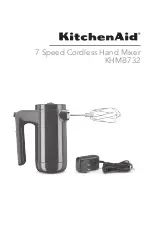
© Copyright 2019 TRENDnet. All Rights Reserved.
TRENDnet User’s Guide
TL2-FG142
64
Additional code Additional code - Example: 1320300003.
Emergency Call
Service
Emergency Call Service (e.g. E911 and others), such as defined by TIA
or NENA.
Policies
Network Policy Discovery enables the efficient discovery and diagnosis of mismatch
issues with the VLAN configuration, along with the associated Layer 2 and Layer 3
attributes, which apply for a set of specific protocol applications on that port. Improper
network policy configurations are a very significant issue in VoIP environments that
frequently result in voice quality degradation or loss of service.
Policies are only intended for use with applications that have specific 'real-time' network
policy requirements, such as interactive voice and/or video services.
The network policy attributes advertised are:
1. Layer 2 VLAN ID (IEEE 802.1Q-2003)
2. Layer 2 priority value (IEEE 802.1D-2004)
3. Layer 3 Diffserv code point (DSCP) value (IETF RFC 2474)
This network policy is potentially advertised and associated with multiple sets of
application types supported on a given port. The application types specifically addressed
are:
1. Voice
2. Guest Voice
3. Softphone Voice
4. Video Conferencing
5. Streaming Video
6. Control / Signalling (conditionally support a separate network policy for the media
types above)
A large network may support multiple VoIP policies across the entire organization, and
different policies per application type. LLDP-MED allows multiple policies to be
advertised per port, each corresponding to a different application type. Different ports
on the same Network Connectivity Device may advertise different sets of policies, based
on the authenticated user identity or port configuration.
It should be noted that LLDP-MED is not intended to run on links other than between
Network Connectivity Devices and Endpoints, and therefore does not need to advertise
the multitude of network policies that frequently run on an aggregated link interior to
the LAN.
Items
Description
Delete
Check to delete the policy. It will be deleted during the next save.
Policy ID
ID for the policy. This is auto generated and shall be used when selecting
the polices that shall be mapped to the specific ports.
Application
Type
Intended use of the application types:
1. Voice - for use by dedicated IP Telephony handsets and other similar
appliances supporting interactive voice services. These devices are
typically deployed on a separate VLAN for ease of deployment and
enhanced security by isolation from data applications.
2. Voice Signalling (conditional) - for use in network topologies that
require a different policy for the voice signalling than for the voice
media. This application type should not be advertised if all the same
network policies apply as those advertised in the Voice application
policy.
3. Guest Voice - support a separate 'limited feature-set' voice service for
guest users and visitors with their own IP Telephony handsets and other
similar appliances supporting interactive voice services.
4. Guest Voice Signalling (conditional) - for use in network topologies
that require a different policy for the guest voice signalling than for the
guest voice media. This application type should not be advertised if all
the same network policies apply as those advertised in the Guest Voice
application policy.
5. Softphone Voice - for use by softphone applications on typical data
centric devices, such as PCs or laptops. This class of endpoints frequently
does not support multiple VLANs, if at all, and are typically configured to
use an 'untagged' VLAN or a single 'tagged' data specific VLAN. When a
network policy is defined for use with an 'untagged' VLAN (see Tagged
flag below), then the L2 priority field is ignored and only the DSCP value
has relevance.
6. Video Conferencing - for use by dedicated Video Conferencing
equipment and other similar appliances supporting real-time interactive
video/audio services.
Summary of Contents for TL2-FG142
Page 1: ...TRENDnet User s Guide Cover Page...
Page 134: ......
















































